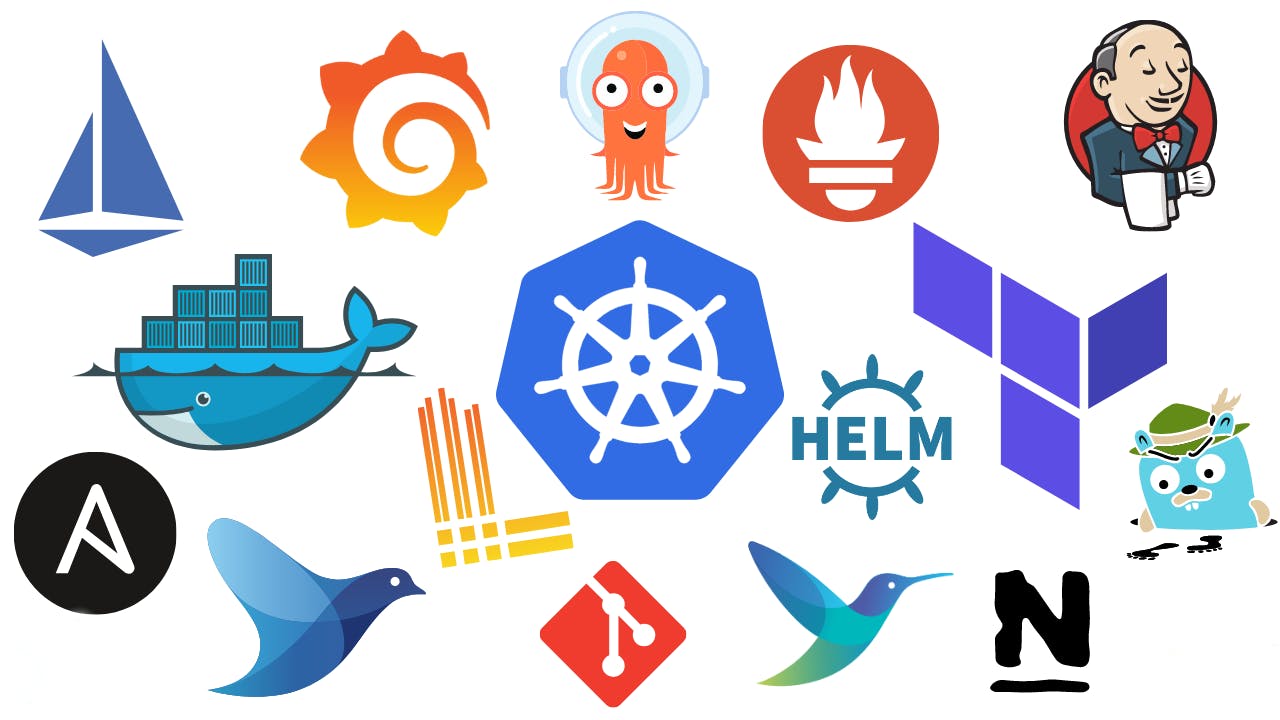What is YAML?
YAML, which stands for "YAML Ain't Markup Language" is a data serialization format that is designed to be human-readable and easy to work with. It is often used for configuration files, data exchange, and data storage. It uses indentation to indicate the structure of the data, which makes it easy to read and understand. It also supports multiple data types, including strings, numbers, booleans, lists, and maps. Additionally, YAML supports comments and it's often used in conjunction with other tools and technologies to automate and manage infrastructure. It is supported by many libraries and frameworks and it's widely used in the DevOps community.
Data Serialization:
Data serialization is the process of converting a complex data structure, such as an object or a set of objects, into a format that can be easily stored or transmitted over a network. The resulting data is called serialized data, and the format it is stored in is called serialization format. Common serialization formats include JSON, XML, and YAML.
Data Deserialization:
Data deserialization is the opposite process of converting serialized data back into its original complex data structure. This process is necessary when the data needs to be used by a program or system, and it allows the data to be manipulated and processed.
Example:
Imagine you have a program that allows users to create and save custom settings. These settings are stored in a complex data structure, such as an object with multiple properties. When the user saves their settings, the program serializes the data, converting it into a format that can be easily stored, such as JSON or YAML. Later, when the user loads their settings, the program deserializes the data, converting it back into the original object.
Serialization and Deserialization are useful because they allow data to be easily stored and transmitted over a network, they also allow different programming languages and platforms to easily communicate with each other by converting data into a common format.
Why do we need YAML?
In addition to the simplicity and readability of YAML, it has several other features that make it a popular choice for developers.
Some of the features include:
Simplicity and readability:
YAML is designed to be easy to read and write, making it a popular choice for developers who need to work with structured data. Its use of indentation to indicate the structure of the data, and its support for comments, make it easy to understand and navigate even for developers who are not familiar with the format.
Flexibility and Support for multiple data types:
YAML can be used to represent a wide variety of data types, including strings, numbers, booleans, lists, and maps. This makes it a versatile format that can be used for a wide range of applications.
Implicit typing:
YAML supports implicit typing, which means that the data type of a value does not need to be explicitly specified in the YAML file. This makes it easy for developers to work with and reduces the amount of unnecessary syntax.
Anchors and Aliases:
YAML also supports anchors and aliases, allowing developers to assign a label to a piece of data and then reference that label elsewhere in the file. This can be useful for repeating complex data structures, or for sharing data between different parts of a configuration file.
Wide range of uses:
YAML is used in many different contexts such as configuration management, automation, orchestration, and infrastructure as code, it is also widely used in the DevOps community as it's human-readable, easy to understand and simple to use.
Interoperability:
YAML is supported by many libraries and frameworks, and it is often used in conjunction with other tools and technologies, this makes it easy to integrate and use with other systems and tools.
DataTypes in YAML
YAML supports a wide variety of data types, including:
Strings:
Strings are plain text and can be wrapped in quotes (single or double).
For Example:
name: "John Wick"Integers:
Integers are whole numbers and can be positive or negative.
For Example:
age: 28Floats:
Floats are numbers with decimal places.
For Example:
weight: 55.5Booleans:
Booleans represent true or false values.
For Example:
is_married: falseDates:
YAML does not have a built-in date data type, but it is possible to use strings to represent dates, and use a library to parse the string to a date object
Lists:
Lists are represented as a series of items, each item is preceded by a dash.
For Example:
colors: - red - green - blueMaps:
Maps are also known as associative arrays, dictionaries, or objects, they are represented as a series of key-value pairs. Each key-value pair is indented under the parent key.
For Example:
person: name: John Wick age: 28
Syntax of YAML
YAML uses a simple syntax that is easy to read and write. Here are some of the basic elements of YAML syntax:
Indentation:
YAML uses indentation to indicate the structure of the data. Each level of indentation represents a new level of nesting.
Example:
name: John Wick age: 28 address: street: 789 North Street city: Brooklyn state: New York zip: 12345In this example, the
nameandagefields are at the same level of indentation, indicating that they are properties of the same object. Theaddressfield is indented one level further, indicating that it is a nested object.Key-Value Pairs:
YAML represents data as key-value pairs. The key is followed by a colon and then the value.
Example:
name: John Wick age: 28In this example,
nameis the key andJohn Wickis the value, the same applies toagewhere the key isageand the value is28Lists:
Lists are represented as a series of items, each item is preceded by a dash.
Example:
colors: - red - green - blueIn this example,
colorsis the key and the values are a list of colors, represented by a dash followed by the color name.Maps:
Maps are also known as associative arrays, dictionaries or objects, they are represented as a series of key-value pairs. Each key-value pair is indented under the parent key.
Example:
person: name: John Wick age: 28In this example,
personis the key and the values are a map of key-value pairs, the keynamehas the valueJohn Wickand the keyagehas the value28Strings:
Strings are represented as plain text and can be wrapped in quotes.
Example:
name: "John Wick"In this example,
nameis the key andJohn Wickis the value. The value is wrapped in quotes to indicate that it is a string.Comments:
Comments are indicated by a pound sign (#) and extend to the end of the line. They are ignored by the parser.
Example:
# This is a comment name: John Wick # This is another comment age: 28Multi-line strings and literal blocks:
YAML supports multi-line strings and literal blocks, which can be useful for storing large amounts of text or code. They are defined using the
|or>character.Example:
description: | This is a multi-line string it can be useful for storing large amounts of textcode: | def func(): print("Hello World")OR
code: > def func(): print("Hello World")In these examples, the
|or>character is used to define multi-line strings and literal blocks. The difference between the two is that the>character strips leading whitespaces and the|preserves them.Anchors and Aliases:
Anchors allow developers to assign a label to a piece of data and then reference that label elsewhere in the file. Aliases allow developers to create a second reference to already defined data.
Example:
person: &label1 name: John Wick age: 28 employee: <<: *label1 id: 123In this example, the "
person" key has an anchor "&label1" assigned to it and the "employee" key has an alias "<<: *label1", this means that the employee key inherits all properties from thepersonkey, and it also has an additional property "id" with the value "123"
YAML DevOps Tools

YAML is a popular format for defining configurations and automation scripts in DevOps, here are a few popular DevOps tools that use YAML:
Ansible:
Ansible is an open-source automation tool that can be used to automate the deployment, configuration, and management of servers. Ansible uses YAML to define playbooks, which are sets of instructions for automating tasks.
Helm:
Helm is an open-source package manager for Kubernetes. Helm uses YAML to define charts, which are collections of Kubernetes resources that can be easily installed and managed.
Terraform:
Terraform is an open-source infrastructure as code tool that can be used to provision and manage infrastructure. Terraform uses HashiCorp Configuration Language (HCL) which is similar to YAML and easy to understand
Kustomize:
Kustomize is an open-source tool for customizing Kubernetes manifests. It uses a set of patching instructions written in YAML to customize the configuration of Kubernetes resources.
CloudFormation:
AWS CloudFormation is a service that helps you model and set up your Amazon Web Services resources so you can spend less time managing those resources and more time focusing on your applications that run in AWS. CloudFormation uses YAML or JSON templates to define the infrastructure.
Jenkins:
Jenkins is an open-source automation tool that can be used to automate the building, testing, and deployment of software. Jenkins uses Jenkinsfile, which is a YAML file, to define the pipeline of tasks and steps needed to build, test, and deploy the software.
Kubernetes:
Kubernetes, often referred to as K8s, is an open-source container orchestration system. Kubernetes uses YAML to define the desired state of the cluster and its resources, such as pods, services, and deployments. These YAML files are often referred to as manifests and can be easily understood and edited by developers and operators.
GitLab CI/CD:
GitLab is a web-based Git repository manager that provides source code management (SCM), continuous integration, and more. GitLab CI/CD uses YAML files to define the pipeline, GitLab pipeline is defined in a .gitlab-ci.yml file, this file contains all the instructions for building, testing, and deploying your code.
Conclusion
In a nutshell, YAML is a powerful and versatile data serialization format that is well-suited for a wide range of applications. Its simplicity and readability make it easy to work with, while its support for implicit typing, anchors and aliases, multiline strings and literal blocks, and a wide range of uses makes it a powerful tool for developers.
However, It's important to keep in mind that YAML is a data serialization format and not a programming language, it doesn't have the same capabilities or complexity as a programming language. However, it's great for storing data in a structured and human-readable way, and it's often used in conjunction with other tools and technologies to automate and manage infrastructure.
P.S.: The credit for the cover picture of this blog goes to spacelift. The source link is given below so do check them out.
